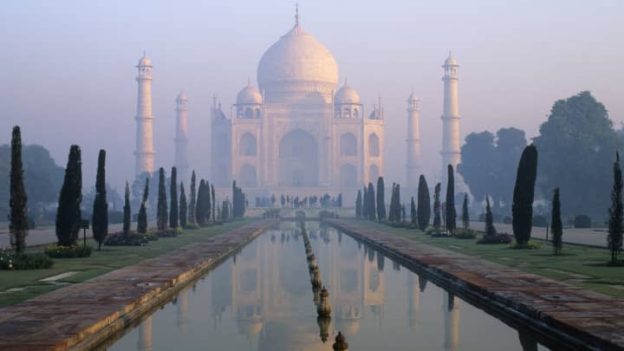India’s GDP is expected to rise above $50 trillion in the next 52 years; $6.6 trillion around 2030, $13 trillion by 2040, $22 trillion by 2050 and $30 trillion by 2060, according to Goldman Sachs.
India will surpass the US to become the world’s second-largest economy by 2075, said Goldman Sachs. India’s GDP is expected to jump above $50 trillion in the next 52 years; $6.6 trillion around 2030, $13 trillion by 2040, $22 trillion by 2050 and $30 trillion by 2060. Surprisingly, Japan which is at present the third largest economy will have a GDP of $7.2 trillion by 2075 and Europe Area GDP is projected to be around $30 trillion.
India’s progress in innovation and technology, favourable demographics, increasing worker productivity, capital investment, healthy balance sheets of private corporates and banks, growing infrastructure, rising population, huge domestic consumption, decreasing dependence on commodities, transition to green energy and improving CAD are the key reasons which will help the world’s largest democracy India surpass the world’s oldest democracy United States.
India’s large population is an opportunity. However, the challenge for the country is productively using the labour force, by increasing the labour force participation rate. That will mean creating opportunities for this labour force to get absorbed and simultaneously training and upskilling the labour force, according to the report.
Aadhaar makes public service delivery much easier
Through Aadhaar, the world’s largest biometric ID system, the country can now verify the identification of the 1.4 billion population both online and physically. “It makes public service delivery much easier and more targeted. It widens the credit net, leads to smaller businesses getting more credit, and that can provide an upside to growth from an increase in productivity,” said Goldman Sachs.
India’s dependence on commodities
As India is the third largest consumer of crude oil and imports 85% of its requirement, the movement in commodity prices has a major impact on the country’s cash reserves. “This was more true around 10 years back. Over the last five years or so, there is growing resilience in the external balance dynamics through a structural improvement in current accounts through services exports and due to the central bank consciously building reserve buffers, which gives more cushion during episodes of dollar strength,” the report said.
India’s transition to green energy – a large investment opportunity
India aims to reach net zero emissions by 2070 and for 50% of the power generation capacity to come from non-fossil sources by 2030. Prime Minister Narendra Modi’s government is also pushing EVs and green hydrogen and is targeting 500GW of renewable or clean energy capacity by 2030. “Ultimately, transitioning to green energy is a large investment opportunity, but it’ll take time. In the interim fossil fuels are going to be the majority share in energy needs until India transitions to green energy,” the report added.
Risks to India’s economic growth
“The main downside risk would be if the labour force participation rate does not increase. The labour force participation rate in India has declined over the last 15 years. If you have more opportunities – especially for women because the women’s labour force participation rate is significantly lower than men’s – you can shore up your labour force participation rate, which can further increase your potential growth,” the report added.
https://www.financialexpress.com/market/indian-economy-to-top-50-trillion-pip-us-capital-energy-markets-among-factors-to-help-says-goldman-sachs/3166908/





